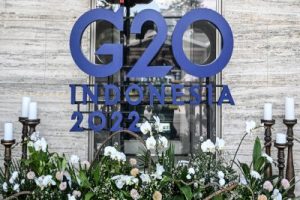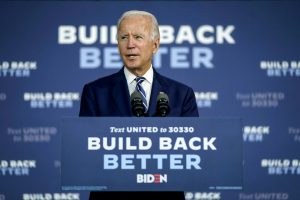
There is a continuing interest in capturing the state of the current global political economy and the global economic policymaking of the major states – the US, China, India, Brazil, Europe, Japan, Korea, and others. Not surprisingly the debate is most active in the US. Experts and officials alike are intent in describing current Biden Administration policy. Most recently some experts have been labeling the global economic framework as ‘post- neoliberalism’, defining it, apparently, in contradistinction to the previous dominant policy framework – ‘neoliberalism’. The dilemma of course is a definitional one as much as anything else – the terms are well known, their meaning not so much.
Recently, colleagues of mine have kicked off a discussion. One, Dan Drezner, from the Fletcher School and the Substack ‘Drezner’s World’ has waded into the policy mix, actually in an article from Reason titled, “The Post-Neoliberalism Moment”. As Dan early in the piece thought to frame first neoliberalism he suggested the following:
The term neoliberal has been stigmatized far more successfully than it has been defined. For our purposes, it refers to a set of policy ideas that became strongly associated with the so-called Washington Consensus: a mix of deregulation, trade liberalization, and macroeconomic prudence that the United States encouraged countries across the globe to embrace. These policies contributed to the hyperglobalization that defined the post–Cold War era from the fall of the Berlin Wall to Brexit.
Dan made it clear, however, that this economic model no longer dominates:
In the 16 years since the 2008 financial crisis, neoliberalism has taken a rhetorical beating; New Yorker essayist Louis Menand characterized it as “a political swear word.” Until recently, no coherent alternative set of ideas had been put forward in mainstream circles—but that has been changing.
And what has been the replacement, well Dan suggests that its the politicians and officials that have been most active in leaving neoliberalism behind:
These ideas are being shaped by powerful officials. The primary difference between Biden and Trump in this area is that Trump’s opposition to globalization was based on gut instincts and implemented as such. The Biden administration has been more sophisticated. Policy principals ranging from U.S. Trade Representative Katherine Tai to National Security Adviser Jake Sullivan have been explicit in criticizing “oversimplified market efficiency” and proposing an alternative centered far more on resilience.
For elements of this policy transformation one need only look to recent Biden Administration policies including the Infrastructure Investment and Jobs Act, the CHIPS and Science Act, and the Inflation Reduction Act. As Dan concludes, the totality of these policy initiatives is: “all represent a pivot to industrial policy—a focus on domestic production.”
In constructing this post-neoliberalism model, folks argue that there is a necessary trade-off between resilience and efficiency. As Dan suggests: “A key assumption behind post-neoliberalism is that policy makers can implement the right policies in the right way to nudge markets in the right direction.”
Now another colleague of mine, Henry Farrell from Johns Hopkins, tries his hand at a definition in a recent Substack Post at his ‘Programmable Mutter’, titled, “If Post-Neoliberalism is in Trouble, We’re all in Trouble”. The Post partly responds to Dan, and further articulates Henry’s view of post-neoliberalism. As he describes it:
A key assumption behind post-neoliberalism is that policy makers can implement the right policies in the right way to nudge markets in the right direction. … I see post-neoliberalism less as a coherent alternative body of thought, than as the claim, variously articulated by a very loosely associated cluster of intellectuals and policy makers, that markets should not be the default solution. … More generally, post-neoliberalism isn’t and shouldn’t be a simple reverse image of the system that it has to remake. It can’t be, not least because it has to build in part on what is already there.
The dilemma, as I see it, for understanding any of these post-neoliberalism models, and also, though less intensely – neoliberalism, is pretty much all definitional. The base of the problem is not really understanding what ‘resilience’ and ‘efficiency’ really mean. And that in turn causes confusion over trying to then understand ‘globalization’. And that unfortunately builds vagueness into our understanding of these economic models especially over what we are to understand to be – post-neoliberalism.
But what isn’t so difficult to understand is the problem that has been created in this post-neoliberal period by current trade policy especially as seen in the United States. Layer it as much as you can but the Biden Administration policy is ‘protectionist’ and the Trump Administration, was, and will in all likelihood be, even more protectionist if Trump is returned to office in late 2024. As Inu Manak has written in a recent piece for the Hinrich Foundation in Australia – a foundation focused on global trade:
Trade has become toxic, not just on the campaign trail, but in the way that it is discussed by both Democrats and Republicans. “Traditional” US trade policy, which began to form its nearly century-old roots under the leadership of President Franklin Roosevelt and his Secretary of State, Cordell Hull, has been described by US Trade Representative Katherine Tai as “trickle-down economics,” where “maximum tariff liberalization…contributed to the hollowing out of our industrial heartland. … The current US approach to trade, if it can be called an approach at all, risks weakening US influence abroad and economically disadvantaging Americans at home. It rests on the false belief that retrenchment of “traditional” US trade policy—by putting America First or catering to a select group of US workers and branding such efforts as “worker-centric trade policy”—will somehow restore the United States to a position of hegemonic dominance with no peer competitor.
The Biden Administration’s allergy to new trade policy initiatives can be seen in its Indo-Pacific economic strategy – the IPEF – the Indo-Pacific Economic Framework for Prosperity. This framework is intended to advance resilience, sustainability, inclusiveness, economic growth, fairness, and competitiveness for the fourteen countries negotiating the IPEF. The countries included are: Australia, Brunei Darussalam, Fiji India, Indonesia, Japan, the Republic of Korea, Malaysia, New Zealand, Philippines, Singapore, Thailand, and Vietnam with the United States. The IPEF partners represent 40 percent of global GDP and 28 percent of global goods and services trade. Negotiations have proceeded well for three of the four pillars including supply chains, clean economy, and fair economy pillars but the Biden Administration has decided not to proceed in negotiating for fair and resilient trade. As William Reinsch at CSIS described the situation:
The commentariat is busy these days debating the future of the Biden administration’s trade policy in the wake of its effective abandonment of the trade pillar in the Indo-Pacific Economic Framework (IPEF) negotiations. (The administration says the talks will continue, and I imagine they will, but I don’t see a conclusion, at least before the election.) The policy is clearly a failure at this point, …
As colleague Ryan Haas of the Brookings Institution, and a former US official – from 2013 to 2017, Hass served as the director for China, Taiwan and Mongolia at the National Security Council (NSC) staff – underscored in his examination of trade policy in the Indo-Pacific:
These constraints will be most visible on trade. The absence of a credible trade and economic agenda for Asia has been the Biden administration’s greatest weakness. Political and national security imperatives will continue to drive the United States’ approach to trade. Do not expect any outbreak of creativity or boldness on trade by the Biden administration in 2024.
The Biden Administration failed to roll back the tariffs imposed by the Trump trade folk. It is a major failure of US trade policy and an expression of the Biden SAdministration’s trade protectionism. It bodes ill for growing the global economy and achieving productivity gains for the United States and others.
Image Credit: E-International Relations
This Post originally appeared at my Substack Post Alan’s Newsletter – https://open.substack.com/pub/globalsummitryproject/p/biden-trade-protectionism?r=bj&utm_campaign=post&utm_medium=web&showWelcome=true

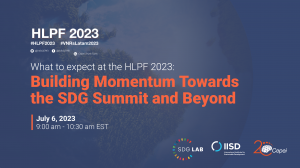 Returning to the SDGs
Returning to the SDGs We are definitely in the midst of Global Summitry gatherings. With the BRICS Summit just recently ended, we are deep into the G20 weekend gathering in New Delhi. So much commentary has accompanied these summitry gatherings. But I caution casual observers and readers: there are way too many assessments and conclusions drawn by all those folks that unfortunately barely pay attention to Global Summitry through much of the year. You can see this in the various ‘hair on fire’ commentaries in the assessments and consequences of the actions of key players in both the BRICS and now especially with the G20. Too many declarations of the G20 demise; firm conclusions that China and Russia would block any consensus statement that sought to condemn Russia’s aggression against Ukraine; the fragmentation of global summitry with the rise of the BRICS plus and the demise of the G20 with leaders from Russia and China choosing to absent themselves from summit.
We are definitely in the midst of Global Summitry gatherings. With the BRICS Summit just recently ended, we are deep into the G20 weekend gathering in New Delhi. So much commentary has accompanied these summitry gatherings. But I caution casual observers and readers: there are way too many assessments and conclusions drawn by all those folks that unfortunately barely pay attention to Global Summitry through much of the year. You can see this in the various ‘hair on fire’ commentaries in the assessments and consequences of the actions of key players in both the BRICS and now especially with the G20. Too many declarations of the G20 demise; firm conclusions that China and Russia would block any consensus statement that sought to condemn Russia’s aggression against Ukraine; the fragmentation of global summitry with the rise of the BRICS plus and the demise of the G20 with leaders from Russia and China choosing to absent themselves from summit.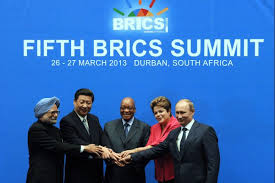
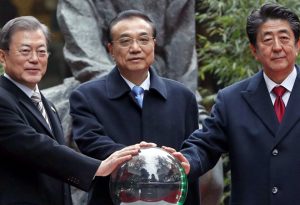 While I have suggested earlier that I don’t think an initial focus on building regional or multilateral institutions is necessarily the best first step in global governance and possibly a means to ‘tone down’ geopolitical competition rhetoric and action, I am now about to contradict myself and this position. For, in the end, there are some obvious regional and international institutions that could encourage collaborative action and push global governance collaboration. And, in fact, I have in mind an obvious one that has – as a current Chinese slang term might well describe it – ‘tang ping’ 躺平 – or ‘lying flat’. It is the Trilateral Summit.
While I have suggested earlier that I don’t think an initial focus on building regional or multilateral institutions is necessarily the best first step in global governance and possibly a means to ‘tone down’ geopolitical competition rhetoric and action, I am now about to contradict myself and this position. For, in the end, there are some obvious regional and international institutions that could encourage collaborative action and push global governance collaboration. And, in fact, I have in mind an obvious one that has – as a current Chinese slang term might well describe it – ‘tang ping’ 躺平 – or ‘lying flat’. It is the Trilateral Summit.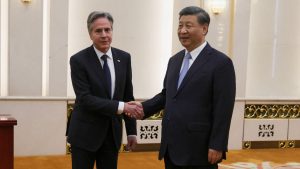 Current diplomatic activity, especially recent visits by senior U.S. officials to China underline the still difficult relations among the major powers. William Burns, the current CIA head, earlier this month described the more tense relations among the major states in international relations in the annual
Current diplomatic activity, especially recent visits by senior U.S. officials to China underline the still difficult relations among the major powers. William Burns, the current CIA head, earlier this month described the more tense relations among the major states in international relations in the annual  So, the International Studies Association (ISA) just concluded in Montreal
So, the International Studies Association (ISA) just concluded in Montreal The CWD focused recent attention on the global management of debt and the growing threat of a sovereign debt crisis. After a number of virtual gatherings and much focused discussion, the CWD completed a Debt Management Proposal that CWD passed to folks in India as India scheduled the first G20 Finance Ministers and Central Bankers Ministerial at Bangalore, or its official name, Bengaluru.
The CWD focused recent attention on the global management of debt and the growing threat of a sovereign debt crisis. After a number of virtual gatherings and much focused discussion, the CWD completed a Debt Management Proposal that CWD passed to folks in India as India scheduled the first G20 Finance Ministers and Central Bankers Ministerial at Bangalore, or its official name, Bengaluru. 